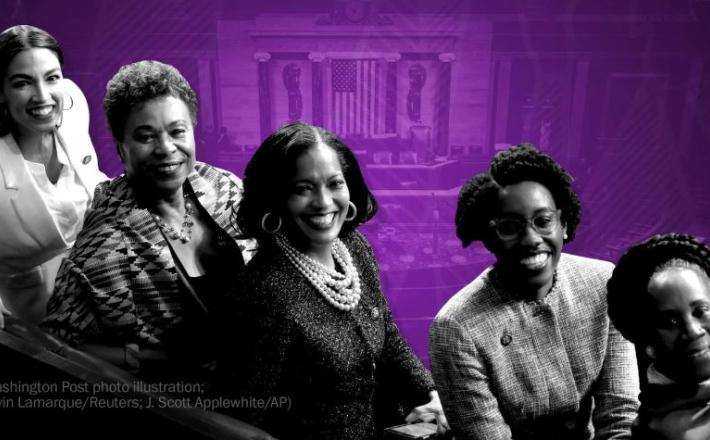Women of color in Congress are challenging perceptions of political leadership
Source: The Washington Post
By Vanessa Williams,
About US is a new initiative by The Washington Post to cover issues of identity in the United States. Sign up for the newsletter.
News and social media documented the historic diversity of the 116th Congress with images of women dressed in colorful traditional clothing and little girls gazing with pride as their mothers took the oath of office.
Rep. Nancy Pelosi (D-Calif.), the first woman to serve as House speaker, regained the gavel Thursday, thanks to Democrats retaking control of the chamber after winning a majority of the congressional district races in the November midterm elections.
A record-setting 36 new women joined the House on Thursday, bringing the total number of female representatives to 102, an all-time high. Among the new congresswomen were the first female Muslim and first Native American members of the chamber.
Women of color were, in fact, the big winners in this year’s congressional races, said Kelly Dittmar, an assistant professor of political science and scholar at the Center for American Women and Politics at Rutgers University’s Eagleton Institute of Politics.
Women of color represent 42 percent of the women in the House, which is about on par with their percentage among women in the general population, Dittmar said. It’s a trend that has been building over the past few congressional election cycles, she said, noting that in 2016, women of color were a majority of new women elected to Congress. It was two years ago that Catherine Cortez Masto (D-Nev.) became the first Latina and Kamala D. Harris (D-Calif.) became the second black woman elected to the Senate.
Women of color, and black women in particular, are the most loyal Democratic voters. In recent years they have put pressure on the Democratic Party to be more supportive of their candidacies, such as with Rep. Lauren Underwood, initially thought to be a long shot to win a mostly white, Republican-leaning district in Illinois. In other instances, they defied party leaders and struck out on their own, as happened with Rep. Ayanna Pressley, who took down a 20-year Democratic veteran in Massachusetts.
Click here to read the full article published by The Washington Post on 4 January 2019.

By Vanessa Williams,
About US is a new initiative by The Washington Post to cover issues of identity in the United States. Sign up for the newsletter.
News and social media documented the historic diversity of the 116th Congress with images of women dressed in colorful traditional clothing and little girls gazing with pride as their mothers took the oath of office.
Rep. Nancy Pelosi (D-Calif.), the first woman to serve as House speaker, regained the gavel Thursday, thanks to Democrats retaking control of the chamber after winning a majority of the congressional district races in the November midterm elections.
A record-setting 36 new women joined the House on Thursday, bringing the total number of female representatives to 102, an all-time high. Among the new congresswomen were the first female Muslim and first Native American members of the chamber.
Women of color were, in fact, the big winners in this year’s congressional races, said Kelly Dittmar, an assistant professor of political science and scholar at the Center for American Women and Politics at Rutgers University’s Eagleton Institute of Politics.
Women of color represent 42 percent of the women in the House, which is about on par with their percentage among women in the general population, Dittmar said. It’s a trend that has been building over the past few congressional election cycles, she said, noting that in 2016, women of color were a majority of new women elected to Congress. It was two years ago that Catherine Cortez Masto (D-Nev.) became the first Latina and Kamala D. Harris (D-Calif.) became the second black woman elected to the Senate.
Women of color, and black women in particular, are the most loyal Democratic voters. In recent years they have put pressure on the Democratic Party to be more supportive of their candidacies, such as with Rep. Lauren Underwood, initially thought to be a long shot to win a mostly white, Republican-leaning district in Illinois. In other instances, they defied party leaders and struck out on their own, as happened with Rep. Ayanna Pressley, who took down a 20-year Democratic veteran in Massachusetts.
Click here to read the full article published by The Washington Post on 4 January 2019.